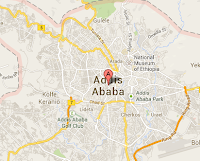From VOA Learning English, this is the Economics Report.
The capital of Ethiopia, Addis Ababa, is seeing big changes. To many people, the city now seems like one very large building project. Heavy equipment blocks roads causing traffic delays. One taxi driver says the roads are so crowded and traffic so slow that he has had to ask his passengers to pay more.
The United Nations says areas of poor living conditions make up 80 percent of Addis Ababa. So city developers have proposed a 10-year master plan. It includes more than 1 million new, low-rent houses as well as new office buildings. New roads and railways are being built to connect all the planned buildings.
Abraham Workneh is an urban planner from Addis Ababa University. He says development can have unpleasant short-term results. He says people lose their homes and their farms to make room for the expanded area. He sees a problem of social links being destroyed as communities disappear under high buildings.
The urban planner says city master plans are sometime ignored. He says many historic buildings are destroyed during such intense development. The new roads and other infrastructure projects in Addis Ababa are going up faster than first planned. Often the space intended for parking vehicles is instead used for more building.
The city government says this is a learning experience for everyone. Haregot Alemu is an official at the Land Development and Urban Renewal Agency. He says the city must develop methods to enforce the master-plan. Work on new roads and an elevated train are expected to be finished in 2017.

940321EA81
ReplyDeleteUcuz Takipçi Satın Al
Sevgiliyle Oynanacak Oyunlar
İzlenme Hilesi
TT İzlenme Hilesi
Ücretsiz Abone
En İyi Ücretsiz Oyunlar
Tiktok Jeton Hilesi
Wordle TR
Google Yorum Satın Al